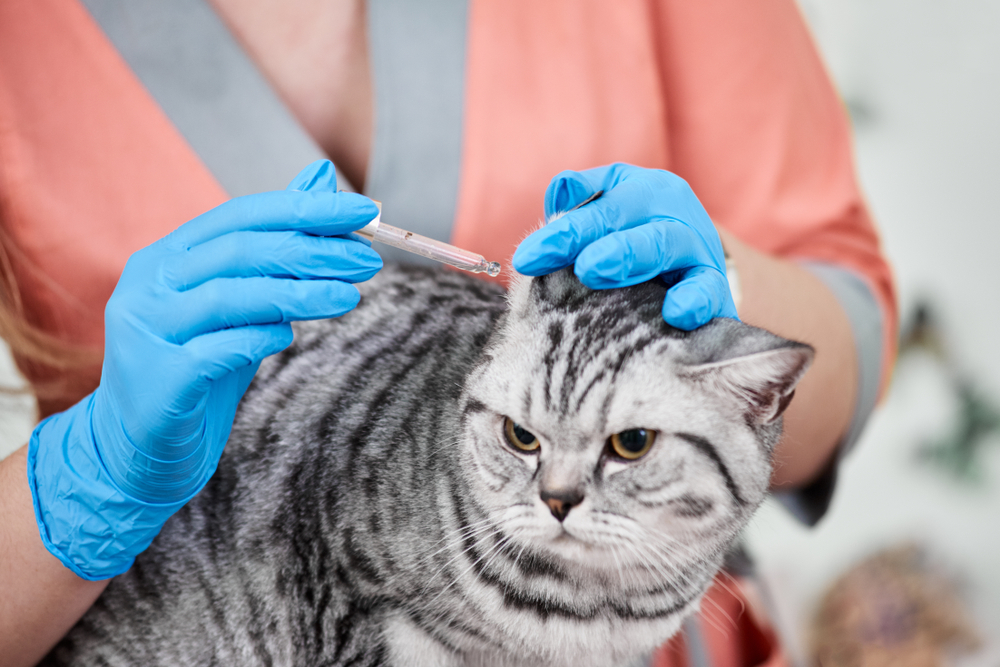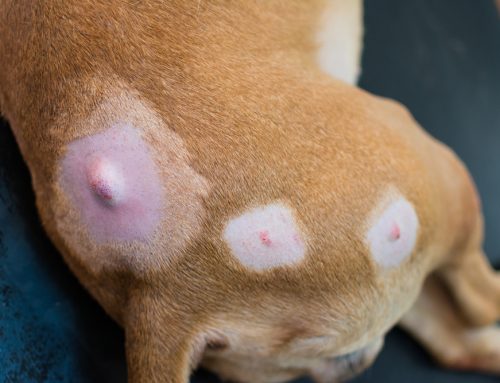Heartworm disease is a common, but easily prevented, disease among pets here in Guam. The disease can cause permanent damage to your pet’s circulatory, cardiac, and respiratory systems, and may be fatal. Read on to learn more about this mosquito-borne illness, and how to best protect your pet from disease.
How is heartworm disease transmitted to pets?
Heartworms are unlike other parasitic worms, which typically lurk in your pet’s intestinal tract. Heartworms travel from the mosquito’s bite wound, through your pet’s circulatory system, to the major blood vessels surrounding the heart and lungs. Intestinal parasites are generally transmitted through contaminated feces.
How does heartworm disease affect pets?
Since heartworms set up shop in your pet’s circulatory system, they can significantly damage the blood vessels that lead to the heart and lungs, so most disease signs are associated with cardiac and respiratory problems. Once your dog is infected, the heartworms take roughly six months to reach adulthood, but they begin causing damage immediately, creating permanent scar tissue in the circulatory system.
Dogs are natural heartworm hosts, so these parasites mature into adults, mate, and produce offspring, thereby always increasing the infected dog’s parasite load. Cats are atypical heartworm hosts, so most heartworms do not survive to the adult stage. Many cats affected by heartworms have no adult worms, which means disease can go undiagnosed.
What are heartworm disease signs in pets?
While heartworms travel the same path in cats and dogs, they can cause different disease signs. In dogs, heartworm disease signs can take months to years to appear, and can include:
- Mild, persistent cough
- Reluctance to exercise
- Fatigue after moderate activity
- Decreased appetite
- Weight loss
- Swollen, fluid-filled abdomen
Dogs with large heartworm loads can develop a sudden blood flow blockage in the heart that leads to life-threatening cardiovascular collapse. Called caval syndrome, this is marked by a sudden onset of labored breathing, pale gums, and dark, bloody urine. Without prompt surgical removal of the heartworm blockage, few dogs survive.
In cats, heartworm disease signs can be subtle or dramatic, and may include:
- Coughing
- Asthma-like attacks
- Vomiting
- Lack of appetite
- Weight loss
In some cases, an infected cat may have difficulty walking, experience fainting or seizures, or suffer from abdominal fluid accumulation. Unfortunately, the first sign in some cats is sudden collapse, or sudden death.
Can heartworm disease be treated in pets?
Heartworm disease is difficult to treat in dogs, requiring months of restricted activity and follow-up care. For cats, no heartworm treatment is available, and you can do no more than manage their disease signs.
If your dog becomes infected with heartworms, a Guam Pet Hospital treatment plan typically follows these steps:
- Confirm the diagnosis — Before jumping into costly treatment that is hard on your pet, we confirm the diagnosis with additional testing. We’ll also stage your dog’s disease by performing diagnostic testing and taking chest X-rays. These results will help guide us on creating the appropriate treatment plan.
- Restrict exercise — Physical exertion increases the rate of heartworm damage to the heart and lungs, so we will recommend that your pet’s keep activity be kept to a minimum. During and after treatment, you must keep your dog severely exercise-restricted, to avoid life-threatening clots of dying and dead heartworms.
- Stabilize disease — In severe cases, your dog’s disease must be stabilized with additional treatments before heartworm disease treatment can begin. Concurrent diseases must also be managed before beginning treatment.
- Administer treatment — We will treat your dog with a series of arsenic-based injections administered deep into their lumbar muscles. Most treatment plans consist of two initial injections given 24 hours apart, followed by a third injection in 30 days.
- Test for treatment success — Roughly six months after the final injection, we will test your dog again for heartworms. If the treatment was successful, the test will be negative.
How can heartworm disease be prevented in pets?

Year-round heartworm disease prevention in pets is simple, and substantially more cost-effective. Options include an oral chewable tablet, a topical liquid, or an injection. We can find your pet’s perfect heartworm preventive, according to their lifestyle and needs, to protect them from disease. Some heartworm preventives also shield your pet from fleas, ticks, and intestinal parasites, making these products more effective at preventing disease.
Are you unsure which heartworm preventive will work best for your pet? Contact our Guam Pet Hospital team for help choosing your furry pal’s prevention.








Leave A Comment